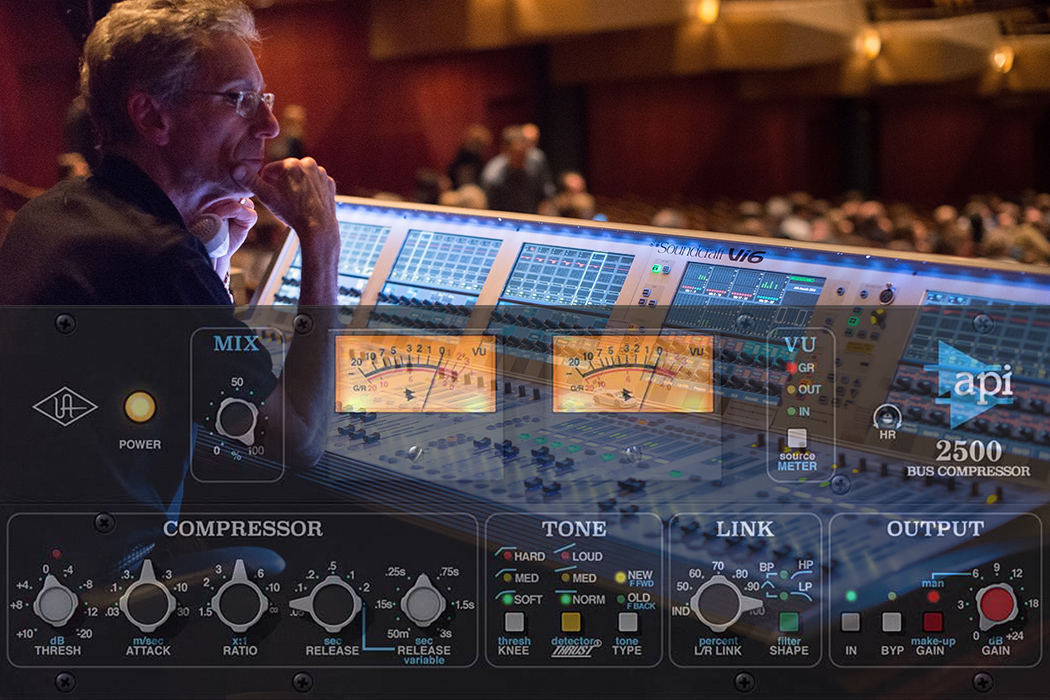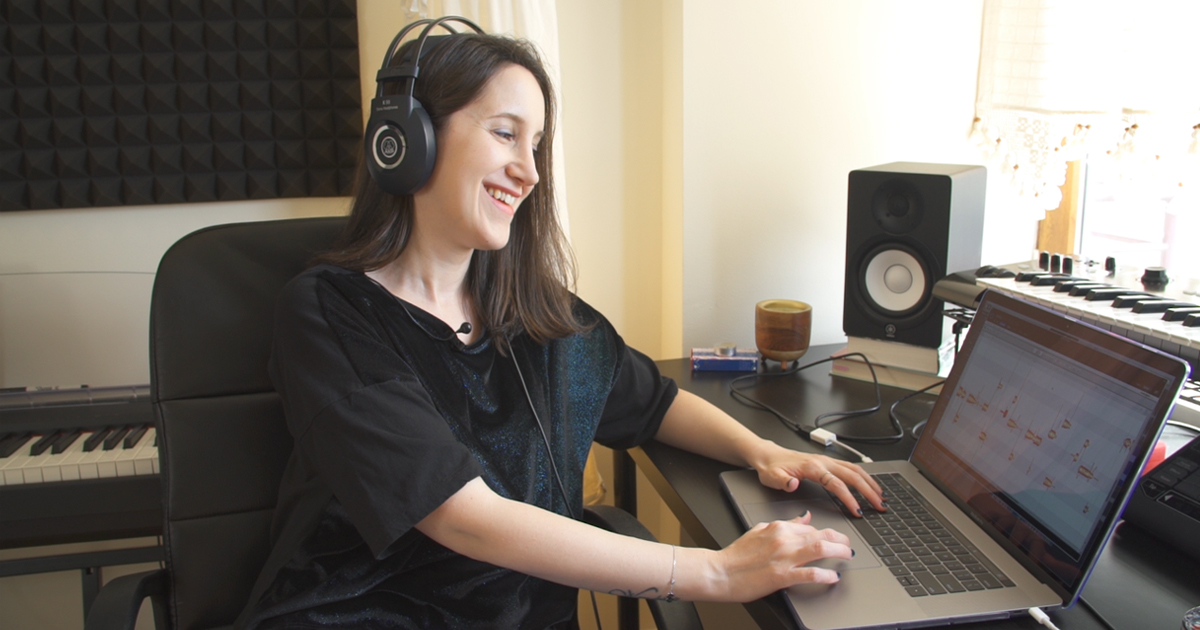+ Pursue your mixing and audio production goals with a Soundfly Mentor like Andrea! Soundfly offers four-week mentorship sessions with a pro, customized to you. Get in touch to learn more.
How many of you are completely terrified of doing anything to the mix buss (a.k.a., “stereo buss” or “2 buss”)?
It is real easy to mess up an entire mix with too much processing — in particular, mix buss compression. Over the years of searching the internet creeping on my favorite mixers’ (Jacquire King, Dave Pensado, Chris Lord-Alge, and many more) mix buss compression settings, I’ve found that a little goes a long way.
Mix Buss Compression Glue
Have you ever heard the term “glue” in a conversation about recording and mixing? No, I’m not talking about the kind you used to put on your hands in elementary so you could peel it off when it dried. (Am I the only one who did that?)
I’m talking about the way compression can make tracks seem like they fit together a little better. When set up correctly, it makes the whole song feel like it’s glued together in subtle ways which give it a nice, musically polished, cohesive sound. The goal with mix buss compression would be to just tame any transients that may spike up in volume just a little too much, and then bring the overall volume of the rest of the tracks up just a bit. We’re just trying to add a little more energy and fullness to the mix.
+ Learn production, composition, songwriting, theory, arranging, mixing, and more — whenever you want and wherever you are. Subscribe for unlimited access!
Mix Buss Compression Settings
The Attack:
The attack setting you use for mix buss compression is just as important as using a compressor on any other individual track. With a faster attack, the compressor will clamp down sooner on the transients that tend to be a little louder than the rest of the audio coming through. A slower attack will wait milliseconds before it clamps down on the audio and starts compressing.
I tend to use a faster attack, but I’m not crushing those transients with a ton of compression, so I still keep the dynamics in my mix. If I found I was killing the transients too much and there was no excitement in my mix, I would probably make it a slower attack setting.
Release:
I tend to use a medium-to-fast release setting. I’ve heard a lot of famous mixers say they set the release with the tempo of the song. So they would watch the gain reduction needle and have it release on beat with the song. I try my best to use this method.
Ratio:
I use a really small ratio of around 1.5 to 1. This means that once my audio passes the threshold I’ve set, there is very little compression happening to that audio. It’s just a little bit. I’m not trying to squash the life out of it. You can experiment with a little bit higher of a ratio, but know that the lower the ratio the less compression (more dynamics), and the higher the ratio the more compression (less dynamics).
Threshold:
I dial the threshold to where I’m only getting about 1-3 dBs of gain reduction on the peaks of the audio. I tend to keep it on the lower side of 1-2 dBs of gain reduction. You just want to kiss the needle. You don’t want to have to much mix buss compression happening. Remember, we are going for a subtle, “glue-like” effect.
Make Up Gain:
Just like on any other compressor, I turn the make up gain to match the amount of gain reduction happening.
Be careful here. Don’t turn it up too loud and fool yourself into liking the result just because it’s louder. Do your best to match the input volume with the output volume of the compressor. We tend to think louder is better when it’s not really better, it’s just louder. Here’s a short video tutorial I shot below to show all of this in action on a mix I’ve started. Check it out!
Conclusion
Mix buss compression is a great way to add a little bit of excitement and glue to your mix. Some people like to slap it on the master buss after they have mixed it (Ryan West for example, whose credits include Jay-Z, Eminem, Kid Cudi, Maroon 5, T.I., Rihanna, and Kanye West). And some engineers like to slap a little bit of compression on in the beginning and mix through it. I don’t think there is a right or wrong way when it comes to when to put it on.
The key is to be subtle and don’t kill a good mix with too much mix buss compression. Use your ears like always. They are your biggest weapons.
Good luck and happy mixing!
Want to get all of Soundfly’s premium online courses for a low monthly cost?
Subscribe to get unlimited access to all of our course content, an invitation to join our members-only Slack community forum, exclusive perks from partner brands, and massive discounts on personalized mentor sessions for guided learning. Learn what you want, whenever you want, with total freedom.
—
 Scott Wiggins is a touring recording artist, singer/songwriter, producer, recording/mix engineer, and music lover. He’s written and recorded multiple songs which have made it into the top Ten on the TX Music Charts. He runs The Recording Solution blog.
Scott Wiggins is a touring recording artist, singer/songwriter, producer, recording/mix engineer, and music lover. He’s written and recorded multiple songs which have made it into the top Ten on the TX Music Charts. He runs The Recording Solution blog.






